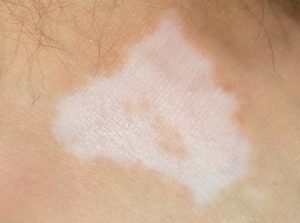 Can a gluten-free diet cure vitiligo? Well, we know that a gluten-free diet is recommended for those who suffer from celiac disease as they have intolerance to gluten. Both celiac disease and vitiligo are autoimmune diseases, and in vitiligo, the skin pigment is lost causing lighter patches. In cases where the two conditions occur together, there is evidence that sticking to a gluten-free diet not only aids in celiac disease but can help with vitiligo, too.
Can a gluten-free diet cure vitiligo? Well, we know that a gluten-free diet is recommended for those who suffer from celiac disease as they have intolerance to gluten. Both celiac disease and vitiligo are autoimmune diseases, and in vitiligo, the skin pigment is lost causing lighter patches. In cases where the two conditions occur together, there is evidence that sticking to a gluten-free diet not only aids in celiac disease but can help with vitiligo, too.
While the effects of vitiligo are not life-threatening, the skin condition can have psychological and social implications depending on where the pigment is lost on the body. Vitiligo affects roughly one percent of the population, and although it is not contagious, vitiligo patients feel somewhat stigmatized.
Advertisement
Research has shown that celiac disease and vitiligo originate from the same family of autoimmune disorders. There are 14 known genes that have been associated with vitiligo, and 13 of them have been found to play a role in celiac disease as well. In an alternative study, researchers examined blood samples of vitiligo patients and found antibodies that also indicate celiac disease.
A 2011 study of a girl who had vitiligo and celiac disease found that when she embarked on a gluten-free diet the pigment returned of her vitiligo lesions. Other vitiligo patients shared online that they have also been experiencing relief in their vitiligo while on a gluten-free diet. The basic understanding is that going gluten-free is quite harmless, and so it is worth a try if it promises a possible improvement with vitiligo.
Dr. Alessio Fasano, director of the University of Maryland Center for Celiac Research, believes there are three common factors that play a role in both vitiligo and celiac disease. The first is genetic predisposition, the second is environmental triggers, and the third is an abnormal leaky gut. Zonulin, a protein that is often found in patients with autoimmune diseases, is believed to play a role in gut permeability. Fasano found that the drug larazotide blocks zonulin and restores gluten intolerance in celiac patients. The next step is to test the effects of larazotide in treating other autoimmune disorders.
Other healing foods for vitiligo
The National Vitiligo Foundation suggests that nutritional deficiencies may contribute to vitiligo, so incorporating certain foods into one’s diet may help the condition. Here is a list of foods you should consume if you have vitiligo.
- Foods high in vitamin B12: Liver, clams, trout, salmon, haddock, and yogurt.
- Foods high in folate: Enriched breakfast cereals, black-eyed peas, spinach, asparagus, and broccoli.
- Foods high in vitamin C: Citrus fruits, broccoli, red peppers, and potatoes.
- Foods high in zinc: Beans, nuts, and dairy.
Other dietary recommendations for vitiligo include:
- Balance meat proteins with plant-based proteins like soy, bananas, watermelon, and leafy lettuce.
- Consume healthy oils and fats like avocados and olive oil to promote cardiovascular health.
- Consume foods that are sources of omega-3s like salmon and avocados.
- Opt for colorful fruits and vegetables.
- Drink plenty of water.
- Avoid acidic foods.
- Avoid “nightshade” vegetables that can promote inflammation – like tomatoes, white eggplant, potatoes, and tobacco.
- Avoid processed foods.
- Avoid fast food and soft drinks.
Essentially, the key here is to enjoy balanced, healthy meals to ensure overall good health.
Related Reading:
Vitiligo may predict immunotherapy response in melanoma patients
Advertisement
Vitiligo may predict immunotherapy response in melanoma patients. In 2014, a male patient noticed a lump under his armpit. When he pressed the lump, it caused a bruise down his side along with severe pain. The male patient was diagnosed with stage four melanoma. Continue reading…
Vitiligo and gray hair-related molecular signals discovered, may help in cure, new study
Vitiligo and gray hair-related molecular signals discovered, which may help in developing a possible cure. Researchers at NYU Langone Medical Center have found a molecular signal, which may raise the possibility of curing gray hair, and possibly vitiligo, with a simple pill. Continue reading…
